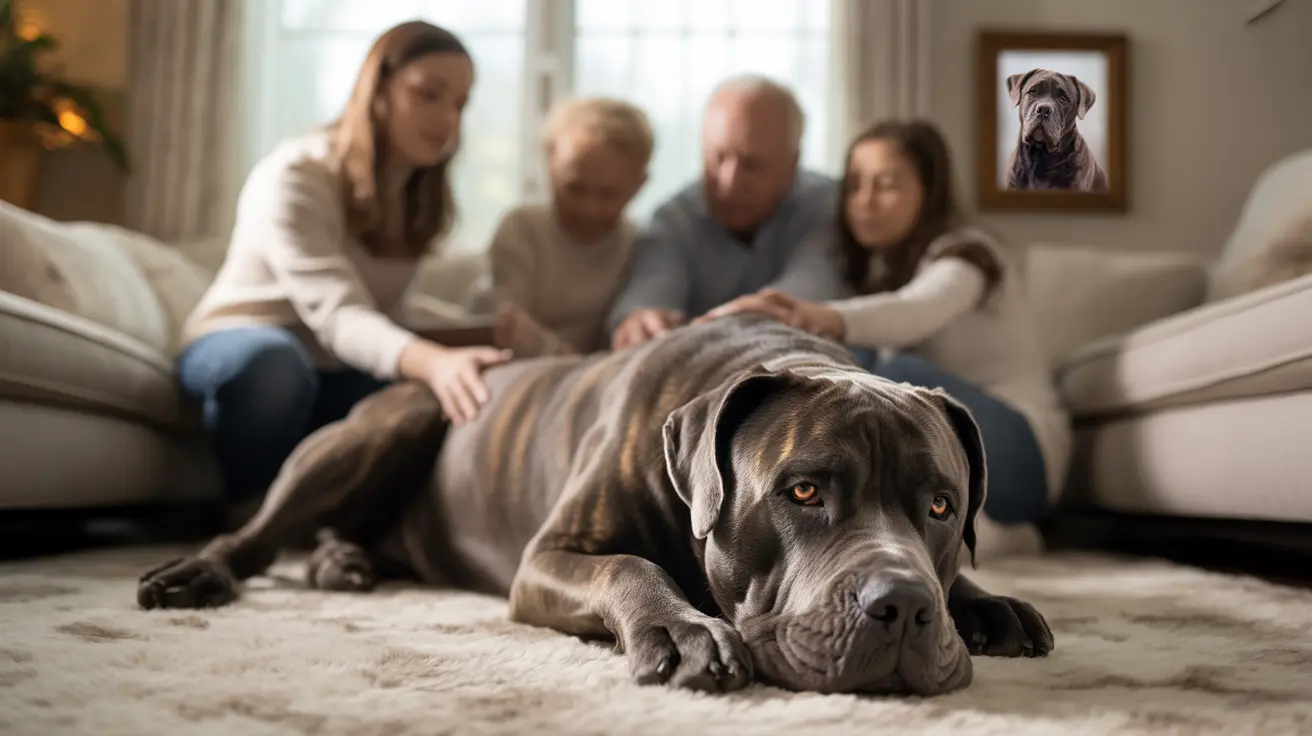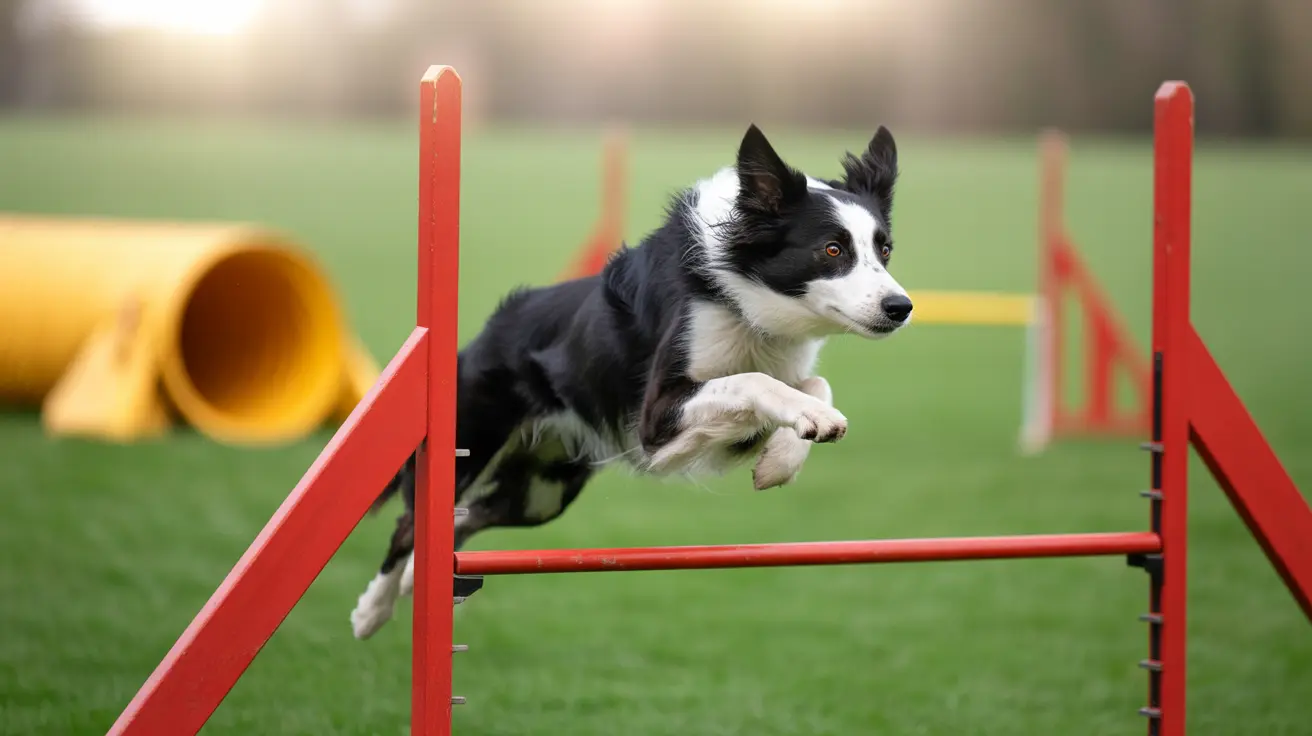Making the decision to say goodbye to a beloved canine companion is among the most challenging experiences a pet owner can face. The journey through dog euthanasia involves complex emotions, from profound grief to uncertainty about timing and circumstances. Understanding when and how to make this difficult choice with compassion and clarity is crucial for both you and your faithful friend.
As pet parents, we often struggle with balancing our deep desire to keep our dogs with us against their quality of life and comfort. This comprehensive guide aims to help you navigate the emotional and practical aspects of end-of-life care for your dog, providing clarity during this challenging time while ensuring your decision is grounded in love and compassion.
Assessing Your Dog's Quality of Life
Understanding your dog's quality of life is fundamental when contemplating euthanasia. This evaluation encompasses multiple factors that together paint a picture of your pet's overall well-being and comfort level. Carefully assessing your companion will help you make a compassionate and informed decision.
Recognizing Signs Your Dog is in Pain
Dogs often try to hide their pain, but certain signs can indicate that your pet is suffering. These symptoms can manifest in ways such as:
- Persistent limping or difficulty moving, which may worsen over time.
- Unusual vocalization or whimpering, especially when touched or during movement.
- Excessive panting or labored breathing, even at rest.
- Social withdrawal or noticeable changes in behavior, such as hiding or snapping.
- Reluctance to be touched or handled, indicating discomfort or soreness.
Observing these signs regularly can suggest your dog is experiencing significant pain and may be struggling with daily activities.
The HHHHHMM Quality of Life Scale
Veterinarians often recommend using the HHHHHMM scale to objectively assess your dog's condition. This scale covers seven crucial factors:
- Hurt: Examines how well pain is managed and if your dog appears to be suffering.
- Hunger: Evaluates your dog's appetite and ability to maintain weight.
- Hydration: Considers whether your dog is drinking sufficient fluids to stay hydrated.
- Hygiene: Looks at cleanliness, self-grooming, and the owner's ability to keep the dog clean.
- Happiness: Measures your dog's engagement in everyday activities and interaction.
- Mobility: Assesses your dog's ability to move comfortably or if they need assistance.
- More good days than bad: Judges overall well-being—the frequency of good versus bad days in your dog's life.
This scale offers a structured way to monitor your pet's quality of life and to make balanced, loving decisions about their care.
Understanding When to Euthanize a Dog
The decision about when to euthanize your dog should be based on careful observation and professional guidance. It’s important to weigh your dog's condition and consult with your veterinarian to ensure the choice is in your dog’s best interest. Consider these crucial factors as you evaluate your dog's readiness:
Terminal Illness and Disease Progression
When facing a terminal illness, several elements indicate the right time may be approaching:
- Response to treatment: If treatments no longer improve your dog’s quality of life.
- Pain management effectiveness: Assess whether pain can be kept at manageable levels.
- Overall comfort level: Ongoing discomfort or distress that cannot be alleviated.
- Disease progression rate: Rapid decline may mean treatments are no longer effective, and suffering is increasing.
Mobility and Basic Functions
Your dog’s ability to perform basic functions is an important marker of their well-being. Observe your pet’s:
- Ability to stand and walk independently, without frequent falls or struggle.
- Bathroom habits: Loss of control, accidents, or inability to get outside may indicate distress.
- Access to food and water: Difficulty eating or drinking points to declining health.
- Comfort while resting: Inability to find a pain-free or restful position can severely affect quality of life.
Any significant and persistent decline in these abilities is a strong signal to seek veterinary advice about end-of-life care.
Preparing for Dog Euthanasia
Preparation helps ensure that your dog's final moments are peaceful and surrounded by love. Knowing your options and making arrangements in advance can provide comfort and reduce stress for everyone involved.
Seeking Professional Support
Your veterinary team is an invaluable resource during this time. They can:
- Provide a thorough medical assessment to determine your dog’s condition.
- Explain the pet euthanasia process, including what to expect before, during, and after the procedure.
- Discuss the timing that best aligns with your dog’s needs and your family’s wishes.
- Give compassionate answers to any concerns or questions you might have, easing emotional stress.
Considering Home Pet Euthanasia
Many families choose home pet euthanasia to ensure their dog’s final moments are spent in a familiar and loving environment. Benefits include:
- A familiar, comfortable setting that reduces anxiety for your pet.
- Minimization of travel-related stress, especially for older or fragile dogs.
- Greater privacy for family members during a deeply emotional time.
- More time and space for peaceful goodbyes in a gentle, personal manner.
This option allows for a dignified farewell and lets your dog pass surrounded by loved ones.
Creating Final Moments with Your Dog
Honoring your pet’s life during their last days creates lasting memories. Before saying farewell, consider these meaningful gestures:
- Taking special photographs to remember your time together.
- Making paw prints or other keepsakes as a tribute to your pet.
- Spending extra quality time together, doing activities your dog enjoys.
- Including all family members—especially children—in goodbye rituals, helping everyone process the loss.
These actions can provide comfort and create a sense of closure for the entire family.
Aftercare and Remembrance
After your dog's passing, there are various respectful and meaningful ways to honor their memory. Some choices include:
- Choosing aftercare options such as cremation or burial, according to your preferences and local regulations.
- Creating personal memorials, such as a framed photo, a plaque, or a planted tree in your dog’s honor.
- Supporting children through open discussions about pet loss, helping them understand grief and remembrance in healthy ways.
- Establishing lasting tributes to your companion, like donating to a shelter or crafting a memory book.
These acts can aid healing and ensure your dog’s legacy lives on.
Supporting Your Family Through Pet Loss
Losing a pet can deeply impact each family member. Helping one another through the grieving process can foster healing and connection. Here are supportive strategies:
- Engage in age-appropriate discussions about death, using honest, gentle explanations to help children process the loss.
- Create memory books or boxes with photos and mementos, providing a tangible way to remember your pet.
- Join pet loss support groups, either locally or online, to share feelings and find comfort in community.
- Allow everyone to grieve at their own pace, giving time for healing while honoring each person’s process.
Supporting one another as a family makes the journey through grief a little easier.
Frequently Asked Questions
- What is euthanasia for dogs?
- Euthanasia is a painless procedure performed by a veterinarian to end a dog’s suffering humanely and compassionately when quality of life severely declines.
- How do I know if it's time to euthanize my dog?
- Signs include chronic pain, marked loss of mobility, severe decline, or overall loss of quality of life that cannot be managed or reversed.
- How is a dog euthanized?
- A veterinarian administers medication, usually via injection, that allows the dog to pass peacefully and without pain.
- Can I stay with my dog during euthanasia?
- Most veterinary clinics allow and encourage you to be present with your pet to provide comfort and say goodbye.
- What are signs my dog is in pain?
- Limping, whimpering, reluctance to move, loss of appetite, and social withdrawal are common signs of pain in dogs.
- Should I consider hospice care for my dog?
- Hospice care can offer comfort, pain management, and emotional support during your dog’s final days, sometimes delaying the need for euthanasia.
- How can I prepare emotionally for euthanasia?
- Talk to your vet about the process, gather emotional support from loved ones, and cherish the final moments together to help with closure.
- What happens after my dog is euthanized?
- You can choose between cremation, burial, or memorial services, depending on your personal wishes and local options.
- How can I help children cope with losing a pet?
- Be honest with them, encourage the expression of feelings, and create remembrance rituals to celebrate your pet’s life together.
- Are there ways to honor my dog's memory?
- Keepsakes, planting a tree, creating photo albums, or making donations in your dog's name are meaningful ways to honor their memory.
The decision to pursue dog euthanasia is ultimately an act of deep love and compassion. While the journey may be difficult, remember that choosing to end your pet's suffering is often the final gift we can give our faithful companions. Trust in your connection with your dog, rely on professional guidance, and allow yourself the grace to grieve while knowing you've made this decision from a place of love.






